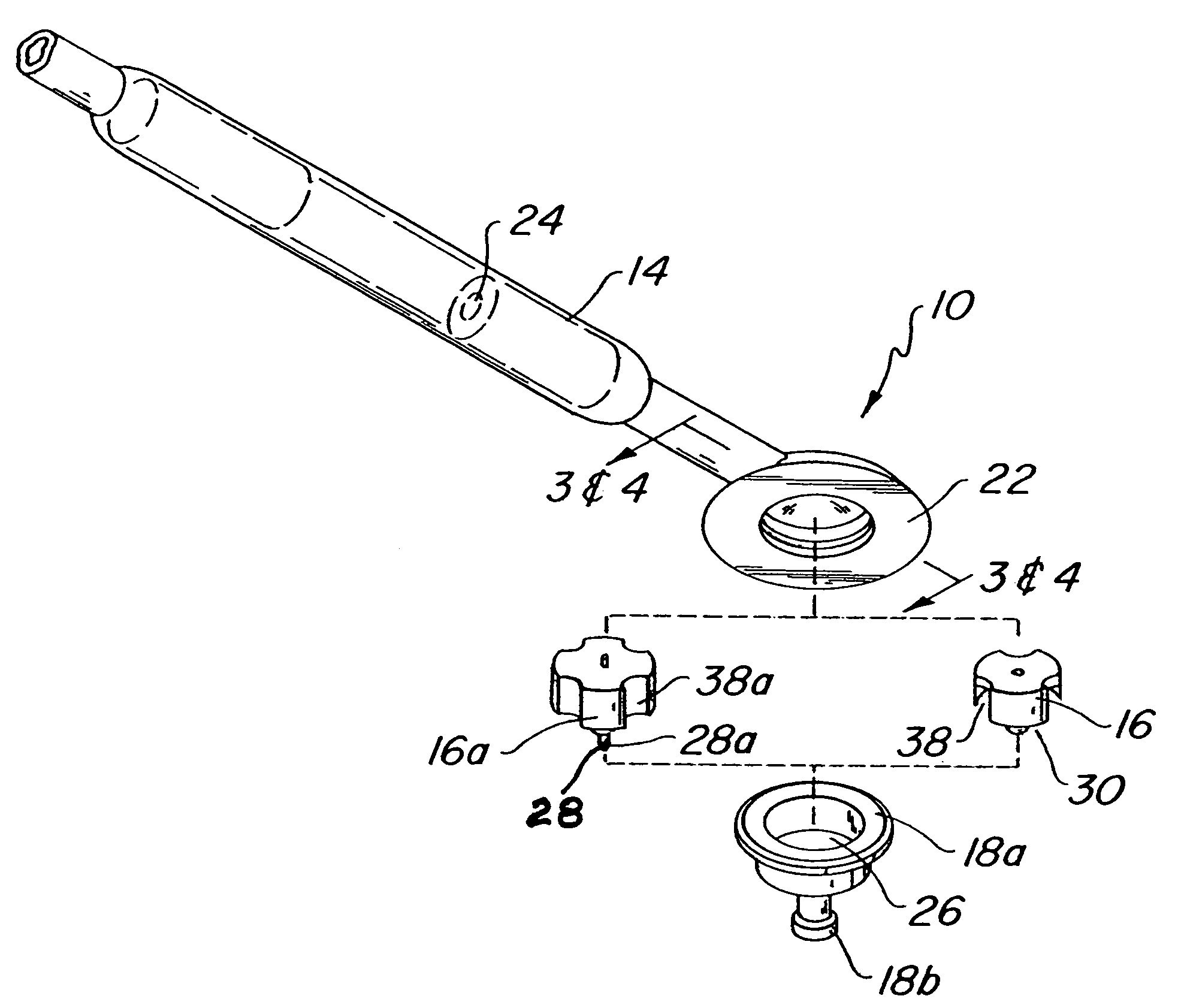Gravitational pressure regulating mechanism
a gravity-regulated mechanism and gravity-regulated technology, applied in the field of shunt valves, can solve the problems of shunt system failure to satisfactorily solve, csf overflow, shunt malfunction and revision, etc., and achieve the effects of non-magnetic, reliable and precise, and simple to make and us
- Summary
- Abstract
- Description
- Claims
- Application Information
AI Technical Summary
Benefits of technology
Problems solved by technology
Method used
Image
Examples
Embodiment Construction
[0037]Referring now to the drawing figures, wherein like part numbers refer to like elements throughout the several views, there is shown in FIG. 1, a gravitational pressure regulating mechanism 10 as attached to a human being 12 which also includes a valve assembly 14. The gravitational pressure regulating mechanism 10 is mounted to the crown of the skull in a hole drilled into the crown and is a attached to a catheter 15 that is introduced into the ventricle 13 within the brain. Placement of the reservoir on the crown of the head is necessary. Frontal horn catheter placement is preferable. As seen in FIG. 1, fluid is drained through the regulating mechanism 10, through valve assembly 14 and into a remote part of the body, as known to those skilled in the art for similar devices.
[0038]As can be seen in FIGS. 2-5, the gravitational pressure regulating mechanism 10 consists of a free-floating weight 16, contained within a rigid reservoir 18. The reservoir 18 has a first end 18a and a...
PUM
 Login to View More
Login to View More Abstract
Description
Claims
Application Information
 Login to View More
Login to View More - R&D
- Intellectual Property
- Life Sciences
- Materials
- Tech Scout
- Unparalleled Data Quality
- Higher Quality Content
- 60% Fewer Hallucinations
Browse by: Latest US Patents, China's latest patents, Technical Efficacy Thesaurus, Application Domain, Technology Topic, Popular Technical Reports.
© 2025 PatSnap. All rights reserved.Legal|Privacy policy|Modern Slavery Act Transparency Statement|Sitemap|About US| Contact US: help@patsnap.com



